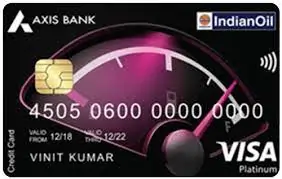When it comes to international travel, a convenient and secure way to manage your finances is essential. This is where travel cards and forex cards come into play. Among the popular options in India, Axis Bank Travel Card and IndusInd Bank Forex Card stand out. Both offer numerous benefits, but understanding their specific features will help you make an informed choice. In this comprehensive guide, we will compare and contrast these cards to help you determine which one aligns perfectly with your travel needs.

Image: www.wishfin.com
Understanding Travel Cards and Forex Cards
Travel cards are prepaid cards specifically designed for international use. They can be loaded with multiple currencies, providing you with the flexibility to avoid exchange rate fluctuations and exorbitant transaction fees. On the other hand, forex cards are prepaid cards that allow you to lock in a currency exchange rate before your trip. This eliminates the unpredictability of currency exchange rates, ensuring you get the best value for your money.
Axis Bank Travel Card: Perks and Drawbacks
Pros:
- No Currency Conversion Fee: Axis Bank Travel Card offers the significant advantage of zero currency conversion fees. When you use the card abroad, you only pay the wholesale exchange rate, saving you money.
- Multi-Currency Card: The card can be loaded with multiple currencies, providing you with the convenience of managing your finances in different countries without incurring exchange rate losses.
- Competitive Exchange Rates: Axis Bank offers competitive exchange rates, ensuring you get the most value for your currency conversion.
- Widely Accepted: The Axis Bank Travel Card is accepted at over 30 million outlets and ATMs worldwide, offering you a hassle-free travel experience.
- Reloadable: The card can be reloaded easily, ensuring you have enough funds throughout your trip.
Cons:
- ATM Withdrawal Charges: Axis Bank Travel Card charges a nominal fee for ATM withdrawals, which can add up in case of frequent withdrawals.
- Monthly Fee: The card requires a monthly fee, which may not be suitable for travelers who make infrequent trips abroad.
- Transaction Limit: Transaction limits may apply, which can be inconvenient for high-value purchases or large purchases.
IndusInd Bank Forex Card: Upsides and Downsides
Pros:
- Zero Balance Facility: IndusInd Bank Forex Card offers a unique zero balance facility, allowing you to load funds as and when required. This eliminates the need to keep a balance on the card, making it an excellent option for unplanned trips or emergencies.
- No ATM Withdrawal Fees: Unlike Axis Bank Travel Card, IndusInd Bank Forex Card does not charge any fee for ATM withdrawals, providing you with convenient access to your funds.
- Instant Activation: The card can be activated instantly upon purchase, allowing you to use it immediately for your travel expenses.
- Reward Points: The card offers reward points on every transaction, giving you the opportunity to earn additional benefits and savings.
- Travel Insurance: IndusInd Bank Forex Card provides complimentary travel insurance, offering peace of mind against unforeseen circumstances during your trip.
Cons:
- Currency Conversion Fee: IndusInd Bank Forex Card charges a currency conversion fee, which can reduce the value of your money, especially when making large purchases or withdrawals.
- Single Currency Card: Unlike Axis Bank Travel Card, IndusInd Bank Forex Card is a single currency card, limiting your flexibility when traveling to multiple countries.
- Limited Acceptance: IndusInd Bank Forex Card has a limited global acceptance compared to Axis Bank Travel Card, which may pose challenges in certain destinations.
- Expiration Date: IndusInd Bank Forex Card has an expiration date, which can be inconvenient if you want to use it for future trips.

Image: www.paisabazaar.com
Choosing the Right Card for Your Needs
The choice between Axis Bank Travel Card and IndusInd Bank Forex Card depends on your specific travel requirements. If you frequently travel to multiple countries and prioritize avoiding exchange rate losses, the Axis Bank Travel Card with its multi-currency feature is a suitable option. However, if you prefer the convenience of zero ATM withdrawal fees and instant activation, the IndusInd Bank Forex Card may meet your needs better.
Points to Consider Before Using a Travel or Forex Card
Before using a travel or forex card, remember these points:
- Notify the Issuing Bank: Always inform the issuing bank about your travel plans to avoid card blocking due to suspected fraudulent activity.
- Carry Cash as a Backup: While cards are generally reliable, it’s wise to keep some cash as backup in case of emergencies or technical difficulties.
- Be Aware of Exchange Rate Fluctuations: Monitor currency exchange rates and plan your currency conversion accordingly to minimize the impact of fluctuations.
- Check Security Features: Ensure your travel or forex card has robust security features to safeguard your funds against theft or fraud.
- Keep Records of Transactions: Maintain a record of your transactions for easy expense tracking and reconciliation.
Axis Bank Travel Card Vs Indusind Bank Forex Card
Conclusion
Understanding the nuances of Axis Bank Travel Card and IndusInd Bank Forex Card will help you make an informed decision based on your unique travel needs. Both cards offer advantages and drawbacks, and the right choice depends on your priorities and travel style. Choosing the most suitable card will ensure a convenient and secure financial experience during your international travel. By following the tips outlined above, you can maximize the benefits and minimize the risks associated with using travel and forex cards. Remember to be vigilant, plan meticulously, and enjoy your trip while leveraging these financial tools.






